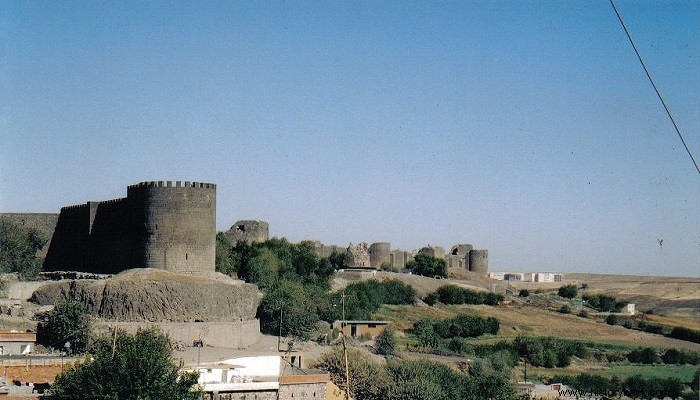
Amida, today's Diyarbakir, in today's Turkey, was, since ancient times, an important passage from Mesopotamia to Asia Minor. In 502 AD the Persian (Sassanid) King Kavad declared war on the Byzantine Empire. After capturing Theodosioupoli, Kavad continued his march towards Amida.
The Persians approached on October 5, 502 AD. The city did not even have a garrison of soldiers. However, its citizens gathered and unanimously decided to defend their city.
The Persians gradually surrounded the city and began its regular siege. The sources do not mention the numerical strength of the besieging army, nor the number of fighting citizens in Amida. The latter must have fought in their entirety – men, women and children – since the sources state that even the monks had taken up arms and were guarding part of the wall.
Heroic Defense
Kavad ordered his men to begin constructing an inclined plane of earth – a ramp – which would reach the height of the walls and allow them to storm through. The inhabitants, however, began to dig secretly, under the inclined plane, having made a hole at the base of the wall, removing the soil from below and carrying it into the city , so that their action would not be noticed by the Persians.
The inhabitants worked feverishly, and removed a great quantity of earth, while at the same time placing pillars, which they had impregnated with inflammable substances. When the Persians attempted to attack they set fire to the pillars and suddenly, the inclined plane collapsed and hundreds of Persian soldiers met a brutal end.
This failure and the heavy losses suffered by his army convinced Kavad not to attempt another raid, at least immediately. He then decided to raid the surrounding area. At the same time, the Arab allies of the Persians had reached Edessa in Mesopotamia, burning, slaughtering and looting.
Only the captives whom the Arabs dragged back bound, amounted to 18,500 people, mostly women and children, as the men were slaughtered, usually . Also the barbaric Arabs plundered vast numbers of animals and every other species. Only the well-fortified and guarded Mesopotamian metropolis of Edessa escaped destruction.
While this was going on Kavad continued to besiege Amida, his army suffering enormous losses, due to the cold, but also the resistance of the inhabitants. Kavad decided to reconstruct the inclined plane that had collapsed.
But the residents had a different opinion. They built a huge stone-throwing machine, which threw projectiles weighing 150, about kilograms. This machine also destroyed a Persian siege ram of enormous dimensions and killed all the Persian soldiers who were handling it. The siege had been going on for a third month – it was already January 503 – and Kavad only had 50,000 casualties in his army to show for it!
Consumption
But Kavad was determined to take the city at any cost. The Persians then spotted a resident who was leaving the city through a hidden passage in search of food. They followed him and discovered the passage. The rest was easy. A part of his army passed through the pass while the main body made a raid.
The inhabitants resisted bravely, but finally the numerical superiority of the Persians prevailed and after a fierce wall battle of several hours, the Persians entered the city, after a siege of 80 days, at noon on January 11, 503 AD
An incredible orgy of blood and destruction ensued. "They destroyed the city, trampled on the sacred vessels and the holy benches, took everything from the churches and captured the survivors, except for a few old people and some who had managed to hide" , laments the chronicler "pseudo-Jesus" the stylite, in his chronicle.
The pseudo-Jesus, probably exaggerating, estimates the death toll at 80,000. However, what is surprising is his reference to the ways in which the inhabitants were killed by the Persians, who stoned some outside the city, drowned others in the Tigris River, and beat others, piercing their bellies. strong>
